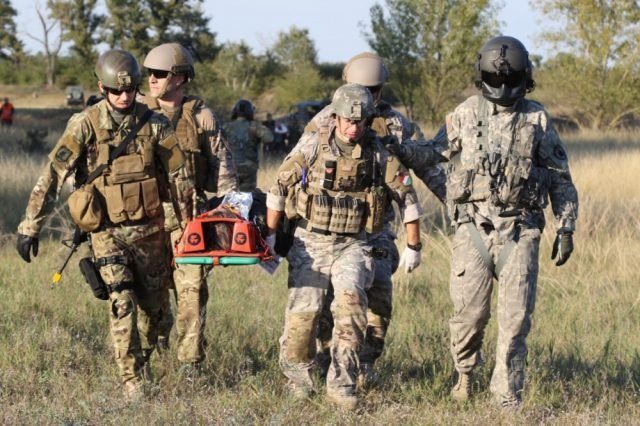
Story by Staff Sgt. Larraine Whetstone
U.S. Special Operations Command Europe
An Army National Guard Helicopter task force completed the first aviation support rotation of its kind in Europe. The multi-state unit from Colorado, Kansas and Utah brought U.S. and allied special operations forces, in the Special Operations Command Europe area of responsibility, the ability to train from new heights, literally, from July to October 2016.
The task force completed more than 212 missions; including, 207 military free-fall jumps, 112 static line jumps and 315 fast-rope insertions to aid special operations’ ability to train in a more realistic manner.
U.S. Army Capt. Casey Atkins, helicopter task force operations officer from Salinas, Kansas, said the helicopter task force flew more than 337 hours to simulate deployed insertion techniques, including military free-fall, a jump conducted at high altitude allowing SOF units the ability to infiltrate deep into enemy territory, and static line jumps for rapid, mass insertion into a deployed environment. Not only did the National Guard units hone their skill for deployment readiness, but qualified three crew chiefs as a fast insertion and extraction system masters, said Army Lt. Col. Anthony Somogyi, the task force commander and Colorado ARNG member from Palisade, Colorado.
Fast-roping is a technique used by SOF to enter areas where a helicopter is unable to land. The service member must rely solely on the skills learned through training to land without a harness.
Army Sergeant Charles Saulnier, a native of Riverton, Utah, is one of the crew chiefs who was trained and certified by the 1st Battalion 10th Special Forces Group as a fast insertion and extraction system master.
“This has been a unique experience,” said Saulnier, a UH-60 helicopter crew chief. “I am able to take my skills learned back to my Utah National Guard unit and train the state side Special Forces Soldiers on fast insertion and extraction systems.”
As the ARNG Helicopter Task Force brought a needed capability to U.S. SOF, it also brought value to allied partners.
According to Hungarian Capt. Miklos Bodai, project officer of the Hungarian special operations, the helicopters provided great value to the Hungarian special operations. They learned to land in urban warfare environments and trained on communication skills such as nine-line medical evacuations and synchronizing communication with the U.S.
“The task force showed camaraderie working with the multi-national special operations,” Bodai stated. “We are definitely looking forward to working with the American forces again.”
After three months of hard work, the task force feels like they’ve come to Europe and set precedence for future National Guard rotations.
“The Soldiers came to enhance the interoperability between the special operations forces… and did just that,” said Somogyi.
